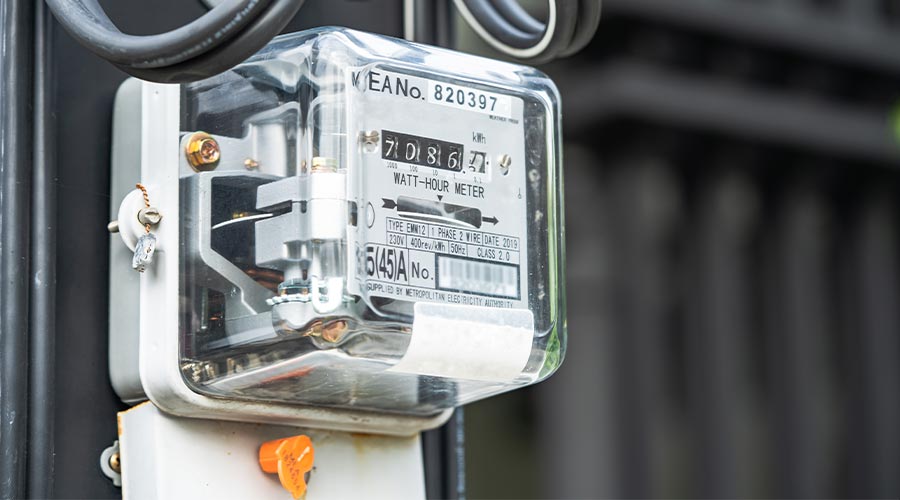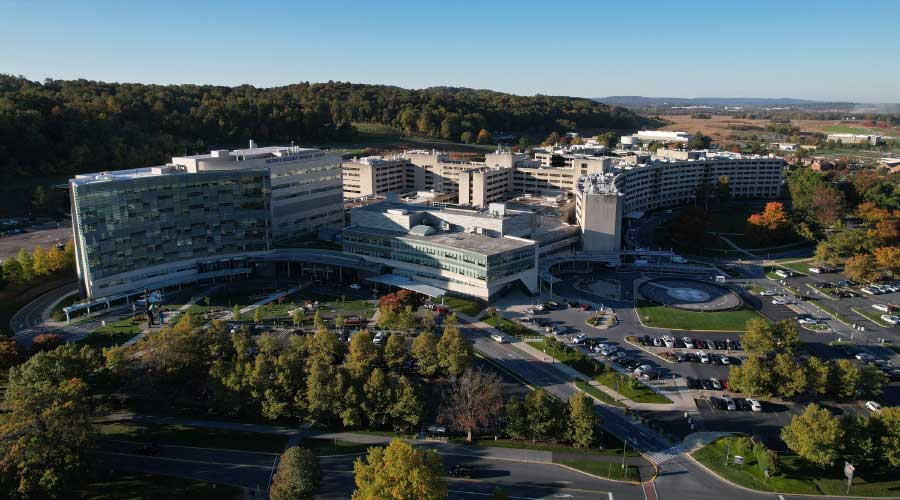Navigating Campus-Wide Power Upgrades with Smart Solutions
Here are some tips and advice for modernizing if your electrical distribution system is decades old.
By By Matthew Boatwright and Chris Skillestad, Contributing Writers
Throughout the 1960 and 70s, many colleges and universities around the United States underwent significant campus expansions to accommodate the needs and demands of growing student populations –– fueled in large part by the Baby Boomers, one of America’s largest generations to-date. At the time, institutions benefitted from an influx in state appropriations, which increased "more than fourfold in today’s dollars, from $11.1 billion in 1960 to $48.2 billion in 1975,” according to the New York Times.
Investment plateaued and tapered in the years that followed, leaving many campus administrators with increasingly tighter budgets for renovation or modernization projects. Consequently, many of the facilities built for the Boomers have remained unchanged –– including the utility infrastructure systems that supported those additions.
Many of the historic buildings on university campuses depend on underground electrical infrastructure that is 50 to 60 years old, leaving it more susceptible to failure and a safety challenge for maintenance workers. As a result, colleges and universities are taking on campus-wide projects to upgrade their systems. Naturally, campus-wide overhauls can be daunting, leaving campus leadership and facilities managers unsure of where to begin. Engaging engineering partners can provide universities invaluable expertise to help guide them through the intricate process.
Assessing the Conditions
When approaching a campus-wide electrical distribution overhaul, the first step should be to enlist an engineering firm to administer a condition assessment of the aging systems. The assessment, or Advanced Planning effort, should not only include a field inspection and cataloging of all electrical equipment and cables, but also a survey and inspection of all underground raceways.
In campus environments, electrical power cables are typically installed in underground raceways between the campus point of delivery, equipment, and buildings. This raceway is composed of concrete encased conduits (or duct banks) that allow power cables to be pulled through from point to point. If the duct bank is in good condition, it is possible to replace a large portion of cable with minimal impact to the campus. However, it is common for sections of duct banks to be in poor condition, preventing the removal and replacement of existing cables. Understanding where new duct banks will be required versus strictly new cables is critical for developing an accurate project budget. The cost of new duct banks is ten times the cost of new cables, and also has significant impacts on the proposed construction schedule and campus impact.
During the mid-1940s, as the demand for iron and steel rose to support World War II efforts, various forms of bituminized fiber pipe –– a mixture of hot pitch and pressed wood pulp commonly referred to as Orangeburg –– became increasingly popular. Orangeburg was an easy-to-use and low cost solution for many campuses expanding their electrical grids in the 1960s, but we have since learned of its tendency to deform and collapse over time– – especially when submerged in groundwater, which underground raceways often are. For systems that predate the 1970s shift to PVC, understanding where this material may have been used –– as well as identifying other locations where conduit has collapsed or become inaccessible for a variety of other reasons, such as physical damage, settlement, and/or corrosion of metallic conduit –– is a critical component of the planning exercise for a large-scale electrical upgrades project.
Often, universities will uncover substantial use of Orangeburg in older areas of campus through a mandrel investigation, which pulls a small, round object through the conduit between manholes or equipment to verify the conduit condition, integrity, and materiality. This investigation should be completed during the Advanced Planning stage of the project once segments of the duct bank are identified that could potentially be reused for the new distribution system. The first step to completing the mandrel investigation is to complete fieldwork of the existing infrastructure, mapping the site to verify existing routing. From there, create a schematic design of the proposed system for future configuration, and develop manhole butterfly diagrams that identify specific conduits that are proposed for reuse. Drawing from the data collected, a licensed electrical contractor should be engaged to mandrel and determine conduit condition and material. This process will also allow the team to verify if the existing conduit quantity and size is large enough to support future campus growth and development.
Having a clear picture of the current state of the underground raceway is absolutely essential to the timeline, budget, and ultimate success of an electrical upgrade project, so the condition assessment is integral to the foundation of a feasible and realistic roadmap for phased improvements. Without this exercise, the project is at risk for incurring substantial change orders during construction, resulting in schedule delays and likely a less optimal system layout in the end.
Formulating the Plan
In addition to a clear understanding of existing conditions, insight into the full extent of the project scope early during design also allows the project team to explore value engineering options and develop phasing plans for keeping the project packages within budget without losing pieces of the core project goals. These plans can segment equipment procurement packages and divide the infrastructure design into smaller portions of scope that coordinate with the electrical sequencing and shipment estimates.
For equipment with longer lead times, for example, orders based on the schematic designs created during the Advanced Planning phase can minimize the amount of lost time between bidding and construction –– ensuring the project schedule keeps pace with the university's timeline. Understanding how these build sequences come together is also critical for transitioning from the old to the new systems. At North Carolina State University, the university’s entire medium voltage grid, which supports over 100 different buildings across the campus, was replaced. Any transition at that scale would have a significant impact on day-to-day activities for students, staff, and research, so it was important for the project team to understand how to align each sequence accordingly to facilitate a minimally disruptive change-over.
Communication was key in developing this phasing; particularly between the project team and designated "building liaisons" to understand functional requirements and potential needs for temporary power during outages. In addition to ensuring research was uncorrupted and classes stayed online, this dialogue enabled a feedback loop that kept everyone on campus engaged and invested in the project's success––allowing efforts to move forward more quickly and seamlessly.
Getting Smarter
As a result of the influx of campus-wide upgrades, engineers are seeing an uptick in smart grid work and expect this to continue in the coming years. Smart grids, as the name suggests, utilize advanced technologies for power demand management, as well as metering and monitoring electricity loads, enabling facilities managers to exercise greater control over their systems — from controlling how electricity is used at peak and off-peak hours to detecting and isolating issues before they arise.
This technology allows for a greater level of resiliency campus wide. Upgraded systems also support the modernization of higher power demand technology, enabling campus buildings to feature the newest equipment, which will broaden the spectrum of academic disciplines that colleges and universities can offer, like advanced science and research. This was precisely the objective at NC State, one of the largest public research universities in the country, when they upgraded their existing electrical distribution system in 2020.
Universities can even take advantage of their investments in upgrades before the official transition to the new grid is even complete. When developing a new smart grid, a dedicated fiber loop for the supervisory control and data acquisition (SCADA) system is also installed and connected. This provides universities the ability to integrate new switches into their SCADA system and capitalize on the ability to remotely monitor and control the motor-operated switches. When the university’s power system needs to operate one of the new switches, the new SCADA system enables remote switching procedures and the use of feedback information on the human machine interface (HMI) screens for additional verification of a switch operation––ultimately increasing operational safety. However, this ability can only be achieved by establishing an intentional and phased approach.
Just as important as addressing the needs of today, this new system helps prepare universities for the future. System updates will help keep owner’s energy independent, maintaining low costs and allowing the university to allocate energy where most needed. The new system at NC State has 50 percent more capacity for growth than the previous, which allows the university room to expand without worrying about how to account for it –– ensuring the focus remains on what's next for the institution, rather than only reactively responding to individual failures.
As college campuses across the United States face challenges in upgrading their deteriorating electrical grids, developing a strategic, campus-wide approach ensures the university can take advantage of the current technologies, and prepare for the next 50 years of growth.
Matthew Boatwright, PE, is Principal, and Chris Skillestad, PE, is Project Manager for RMF Engineering.
Related Topics:












